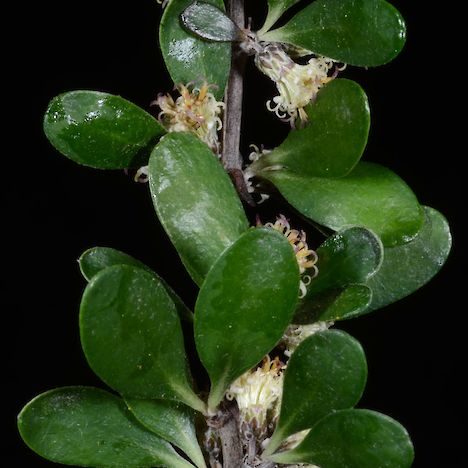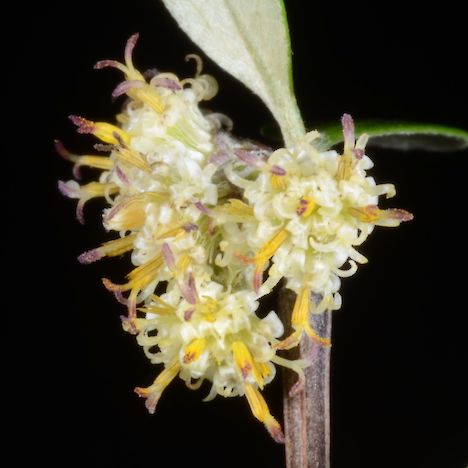Threat category:
Threatened: Nationally Vulnerable?Regions:
Canterbury, Otago, SouthlandDistribution:
Southern South Island
Key Features
- Semi-deciduous shrub or small tree to 5-8 m, multi-stemmed or with a trunk to 50 cm diameter.
- Small, dull, oval, leaves have loose hairs underneath and are attached to branchlets that are square in cross section (roll between fingers).
- Scales surrounding the small flower heads have dense white hairs on their margins.
Distribution and Habitat
- South Island, locally distributed from Canterbury to Northern Southland. Lowland to montane shrubland, alluvial flats and rock outcrops, sometimes forming dense stands but often only relics remain.
Threats
- Habitat modification and loss.
- Regeneration failure due to competition with exotic grasses and weeds.
- Fire.
- Browsing and disturbance by stock.
Management Opportunities
- Survey for new locations.
- Mark known sites.
- Protection of habitat – avoid afforestation of known sites.
- Propagate and re-establish in appropriate sites.
- Exclude stock.
- Control exotic grasses using glyphosate if necessary.
- Ensure that forest owners are aware of potential habitats and can recognise the species.
Monitoring Options
- Check existing populations annually.
- Report new locations to DOC, NZPCN.
Further Information and Support
- New Zealand Plant Conservation Network (NZPCN). http://www.nzpcn.org.nz
- References:
- Dopson et al. (1999). The conservation requirements of New Zealand’s nationally threatened vascular plants. Threatened Species Occasional Publication 13. Department of Conservation, Wellington.
- Peter de Lange, Peter Heenan, David Norton, Jeremy Rolfe and John Sawyer (2010). Threatened Plants of New Zealand. Canterbury University Press, Christchurch. 472 pp.




